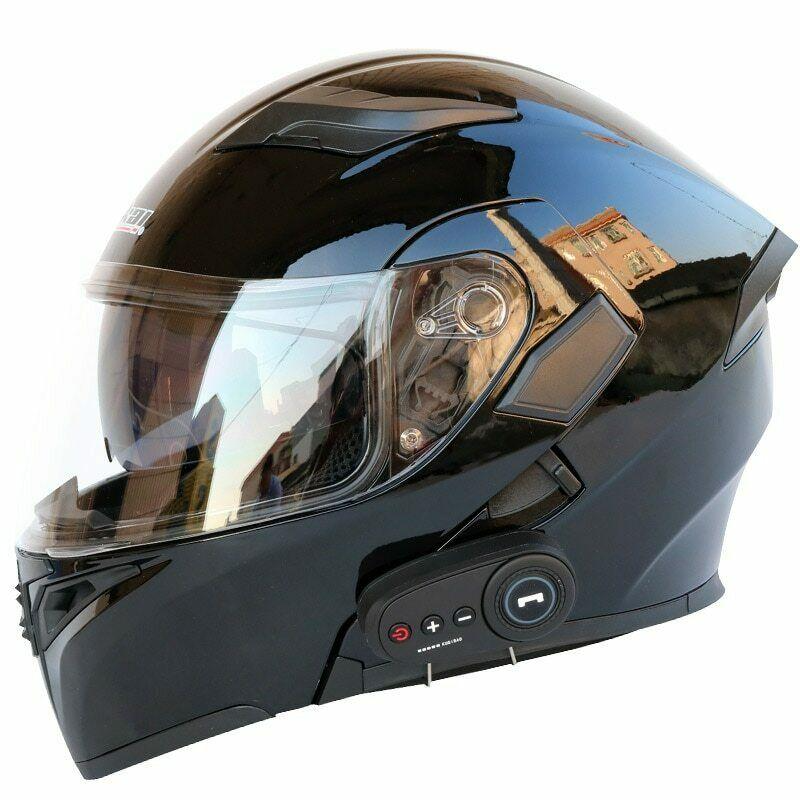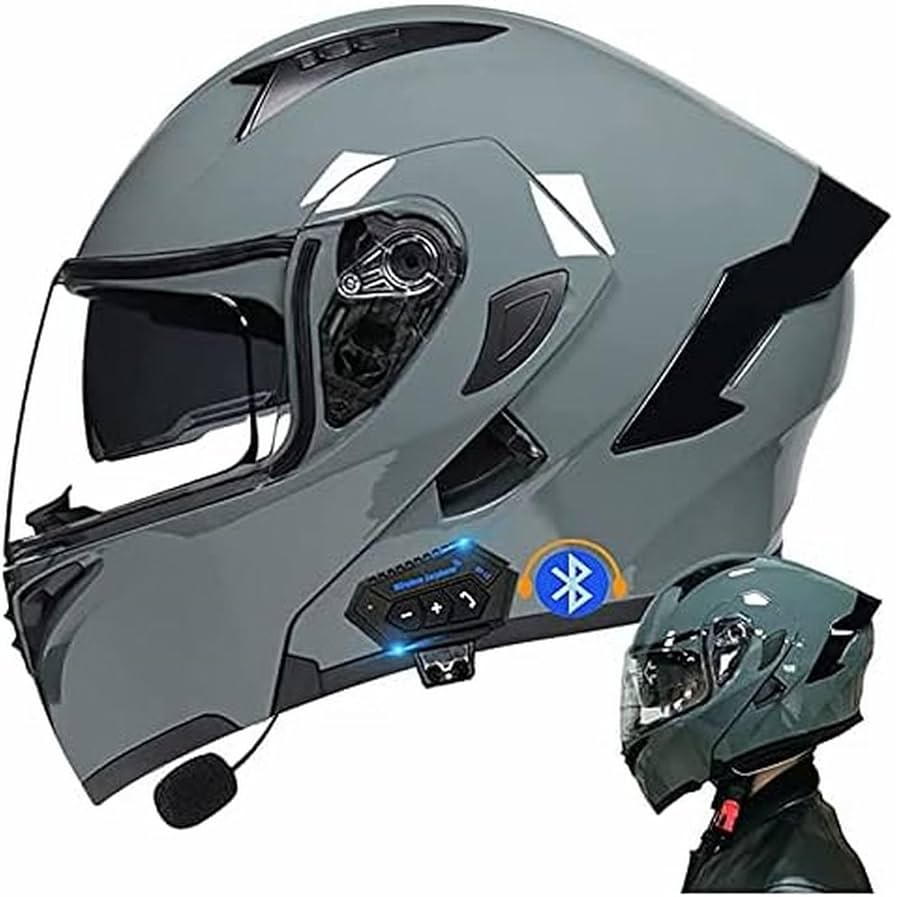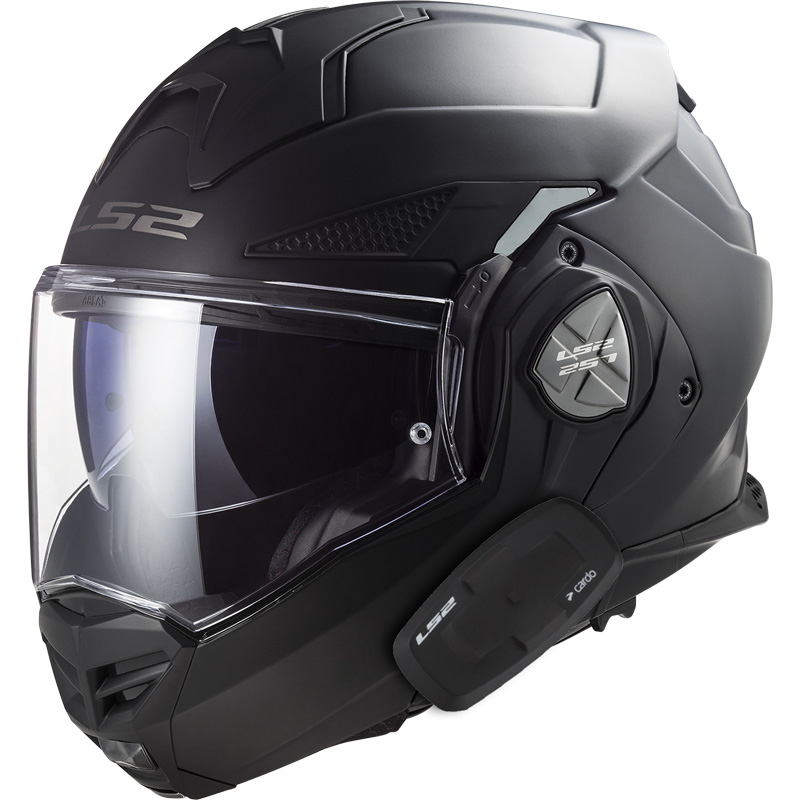Introduction
Motorcycle riding comes with its thrills and challenges. One of the biggest challenges is communication. Riders often find it difficult to talk to each other while on the road. Traditional methods like hand signals work, but they are not always effective, especially at high speeds. Enter motorcycle helmet Bluetooth technology. This innovation is changing how riders communicate on the road. Bluetooth technology offers a hands-free option for conversation, navigation directions, and even music streaming. Today, we will delve deep into this fascinating technology, its benefits, types, and what to consider before making a purchase.
What is Motorcycle Helmet Bluetooth?
Bluetooth technology has transformed many aspects of our lives. From smartphones to smart homes, Bluetooth has changed the way we connect devices. But what exactly is Bluetooth, and how does it work in motorcycle helmets? In simple terms, Bluetooth is a wireless technology that allows devices to communicate over short distances. In the context of motorcycle helmets, Bluetooth systems are integrated with the helmet itself or attached as a separate device.
These systems usually consist of a microphone, speakers, and controls that are designed to fit securely within the helmet. For example, many helmets come with built-in Bluetooth systems that allow riders to listen to music or talk on their phones while riding. Riders can easily connect these systems to their smartphones, GPS devices, or other Bluetooth devices. The technology has improved significantly in recent years, offering better sound quality, longer battery life, and enhanced connectivity.
Communication Made Easy
The biggest draw of Bluetooth helmets is communication. Many riders enjoy riding in groups, and with Bluetooth, it’s much easier to stay connected. Instead of shouting over the wind or pulling over to talk, riders can chat with one another seamlessly. Bluetooth technology allows group connectivity, meaning multiple riders can communicate at the same time. This feature is especially useful for long rides where staying together is vital. Riders can warn each other about road hazards or share their plans without stopping.
Beyond group rides, Bluetooth helmets also allow solo riders to stay in touch with family or friends. Whether it’s answering calls or getting navigation updates, the convenience is unmatched. Hands-free operation means that riders can keep their hands on the handlebars and their eyes on the road. This feature allows for safer riding, as riders are less distracted by their devices. Bluetooth provides freedom without sacrificing safety, making it an invaluable tool on the road.
Entertainment Options
Bluetooth helmets aren’t just designed for communication. They also offer entertainment options. Riders can connect their helmets to music streaming services or play their favorite playlists. Listening to music while riding can enhance the experience, making long journeys more enjoyable. With the right Bluetooth system, riders can control music playback easily. Most systems feature buttons or voice commands to switch tracks, adjust volume, or pause the music.
Many riders appreciate the ability to enjoy audiobooks or podcasts, especially on long trips. Rather than focusing solely on the road, riders can immerse themselves in engaging stories or informative talks. This adds an extra layer of enjoyment to the riding experience. Riders can also combine navigation directions with music, so they never miss a turn. The dual functionality makes Bluetooth helmets a versatile choice for any rider.
Types of Motorcycle Helmet Bluetooth Systems
There are several types of Bluetooth systems available for motorcycle helmets. Understanding the different types can help you make an informed choice. Some helmets come with built-in Bluetooth systems, while others require additional attachments. Each type has its advantages and disadvantages.
Built-In Bluetooth Systems
Many modern helmets now come with built-in Bluetooth technology. This means that the Bluetooth components are integrated into the helmet itself. One of the major benefits is that you won’t have to worry about additional devices. Built-in systems often have a sleeker design, which reduces wind noise and improves overall comfort. Since the technology is designed specifically for that helmet, compatibility issues are minimal.
However, built-in systems can be expensive. They often cost more than traditional helmets without Bluetooth capabilities. Additionally, if the Bluetooth system fails, you may need to replace the entire helmet. This can be a downside for some riders. Still, for those who prioritize convenience and seamless integration, built-in Bluetooth helmets are an excellent choice.
Attachments and Aftermarket Solutions
Another option is to use aftermarket Bluetooth units that can be added to any helmet. These systems typically involve a separate unit that you can attach to the side of your helmet. The advantage of aftermarket solutions is versatility. If you already own a favorite helmet, you can upgrade it without having to buy a new one. Aftermarket Bluetooth units often come with various features, allowing you to choose the functionalities that suit your needs best.
However, these systems may not always be as integrated as built-in options. You will need to ensure that the attachment is secure and that the speakers and microphone are set up correctly. Wind noise can also be a factor with some aftermarket options, as they may not be as well-designed for aerodynamics. But for budget-conscious riders or those who prefer customizing their gear, aftermarket Bluetooth systems provide an appealing alternative.
Benefits of Using Bluetooth in Motorcycle Helmets
Motorcycle helmet Bluetooth technology offers numerous benefits that enhance both safety and enjoyment. Understanding these advantages can help you appreciate why this technology is popular among riders.
Safety First
One of the most compelling reasons for using Bluetooth systems is the safety aspect. Communication is crucial for safe riding, especially in group scenarios. Riders can relay important information quickly. For example, if there’s an obstacle on the road or a change in speed, communicating instantly can prevent accidents.
Moreover, the hands-free operation means that you won’t need to physically handle your phone or other devices while riding. Distracted riding is a leading cause of accidents. Bluetooth mitigates this risk by allowing you to stay connected without diverting your attention from the road.
Bluetooth connectivity also enhances navigation. Many riders use GPS apps for directions. With a Bluetooth helmet, you can receive turn-by-turn instructions directly in your ear. This feature keeps your eyes on the road instead of on a screen. You can listen to directions while enjoying the ride. There’s no need to stop and check your phone, which makes for a smoother experience.
Additionally, some Bluetooth systems allow for real-time updates about traffic conditions or alternate routes. This capability can greatly improve your overall riding experience, as you can avoid congested areas or road closures quickly.
Comfort and Convenience
Finally, the comfort and convenience provided by Bluetooth technology cannot be overlooked. Whether you’re taking long trips or short rides, having music or podcasts enhances the experience. You can easily switch tracks or adjust volumes without any hassle. Furthermore, Bluetooth technology often includes noise-canceling features, which can block out wind noise. This means you can enjoy clearer audio without constant distractions.
The convenience of answering calls without stopping is another huge advantage. You can maintain the flow of your ride while handling important calls. This is especially beneficial for long-distance riders who may need to stay connected for personal or work-related reasons.
Factors to Consider When Choosing a Bluetooth Helmet
Selecting the right Bluetooth helmet involves more than just picking a model with features you like. Several factors should be taken into consideration to ensure you make a wise investment.
Budget
One of the first factors to think about is your budget. Bluetooth helmets can vary significantly in price. Built-in Bluetooth helmets typically cost more than their non-Bluetooth counterparts or aftermarket solutions. Determine how much you are willing to spend before you start shopping. Knowing your budget will help you select a product that meets your needs without breaking the bank.
Sound Quality
Sound quality is another essential aspect. Whether you’re listening to music, podcasts, or making phone calls, clarity is important. Review customer feedback and product descriptions to find out about the sound quality of potential choices. Some systems offer noise-canceling features, which can enhance your audio experience. Make sure you invest in a product that provides clear sound, as poor audio can detract from your riding experience.
Compatibility
If you opt for an aftermarket Bluetooth unit, compatibility is a significant consideration. Not all units work with every type of helmet. Check to see if the unit you wish to purchase is compatible with the helmet you own. This can save you from added frustration down the line. For built-in Bluetooth systems, ensure that they can connect seamlessly to your smartphone or GPS.
User-Friendliness
Lastly, evaluate how easy the system is to use. The controls should be intuitive, allowing you to adjust settings while riding. Some features, such as voice commands, can enhance usability significantly. Ensure that you can easily operate the system without getting distracted from the road.
Conclusion
Motorcycle helmet Bluetooth technology offers a wide array of benefits for both safety and enjoyment. This innovation helps riders communicate more effectively, enhances their navigation experience, and provides entertainment options. By understanding the different types of Bluetooth systems available, you can choose one that best suits your riding style and budget.
Whether you opt for a built-in Bluetooth helmet or an aftermarket solution, the decision comes down to your personal needs. Factors to consider include budget, sound quality, compatibility, and user-friendliness. When chosen wisely, a Bluetooth helmet can elevate your riding experience, making every journey safer and more enjoyable.
As technology continues to advance, you can expect even better features and performance from Bluetooth systems in the future. The integration of smart technology into everyday gear is not just a trend; it’s a necessity for modern riders. So, whether you’re a seasoned motorcyclist or a new enthusiast, investing in a Bluetooth helmet could be one of the best decisions you’ll make for your safety and enjoyment on the road.





